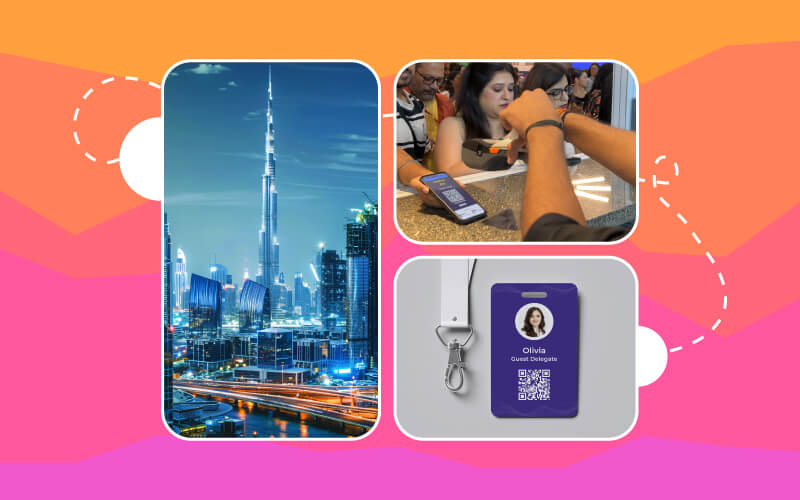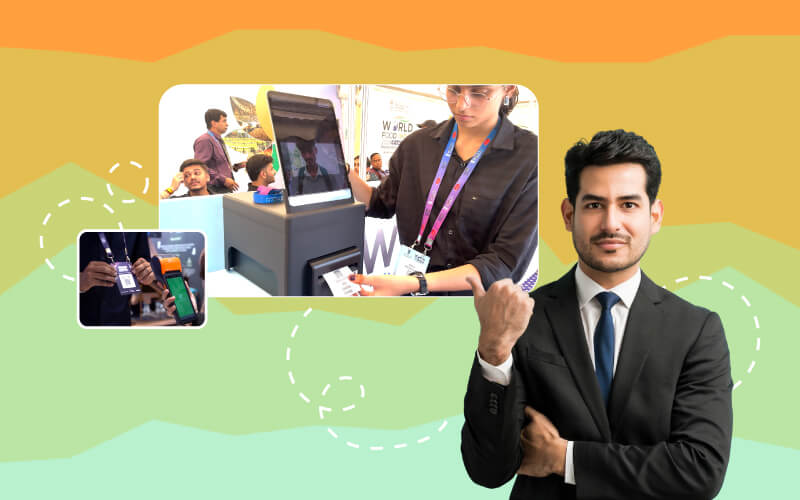With continuous advancements in the event industry, new technologies are setting up and emerging to enhance the participation of attendees. Not only it’s enhancing the participation but it’s improving their experiences while streamlining the event security. Among all such technologies, facial recognition technology is one of the most demanded innovations for rapid transformation in event management.
In this comprehensive blog, we are going to delve into the workings of facial recognition systems in event management and explore the benefits for both organizers and attendees. Moreover, we’ll be discussing the potential challenges and considerations during the implementation of facial recognition technology,
What is Facial Recognition Technology?
Facial recognition technology is a system used to confirm or identify individuals by analyzing patterns in their facial features. It works by capturing an image or video of a person’s face, then using algorithms to evaluate unique traits like eye spacing, nose shape, and facial contours.
This technology is widely applied in security access control, surveillance, identity verification, and sometimes in personalized advertising or device authentication. However, imagine the power of facial recognition, – just using the face as the ID Card at an event.
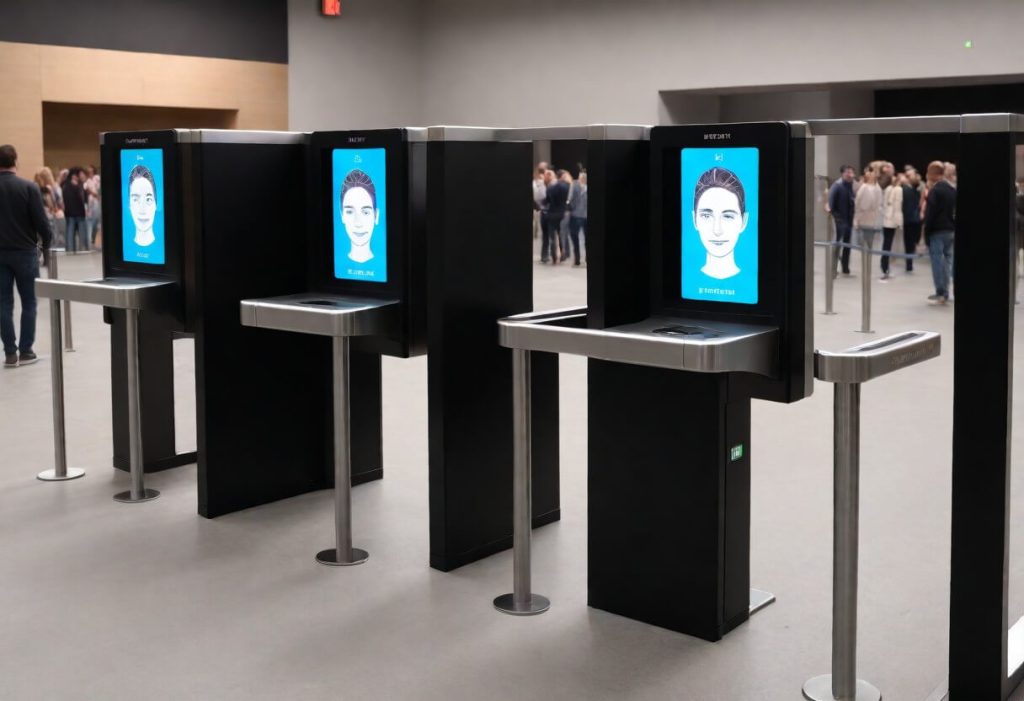
In simple terms, facial recognition technology is a type of biometric software that analyzes a person’s facial features and contours to create a unique “facial fingerprint.”
How Does Facial Recognition Technology Work at Events?
Facial recognition at events works in two key stages: Pre-registration and Real-time Identification.
- Pre-registration: Firstly, it starts with the participants submitting their photos during event registration. This picture is then stored securely in the event’s database.
- Real-time identification: At the time of event check-in, cameras equipped with a facial recognition system capture individual facial features when they enter. Then the facial recognition system analyzes the live images and reads the key facial features details like space between eyes, nose, jawline shape etc.
- Matching and Access: After face detection and recognition, the information collected is compared to the pre-registered photos of attendees. If there’s a match, then the system will allow entry to attendees, if possible then sometimes it can greet with the participant’s name on the screen. However, the facial recognition system also assists in event management access control. It flags unauthorized individuals and prevents them from accessing the events
- Enhanced Security: If the management wants additional security, facial recognition systems can be integrated with other applications. This means the process might involve scanning a QR code or showing a government ID with the facial recognition check.
Revolutionizing Event Management For Event Organizers
In addition to streamlining processes and improving security, facial recognition offers several benefits for event organizers. Here are some key ways it’s transforming the industry:
Faster and Smoother Check-in
The days of staying in line and waiting for event tickets or confirmations are long gone. With facial recognition technology, event check-in is one of the easiest tasks. All attendees have to do is scan their faces at the event and then the algorithm will analyze the features and try to match it with a pre-registered database. Event organizers benefit from this because it eliminates the need for the whole event staff, they can focus on other aspects of the event.
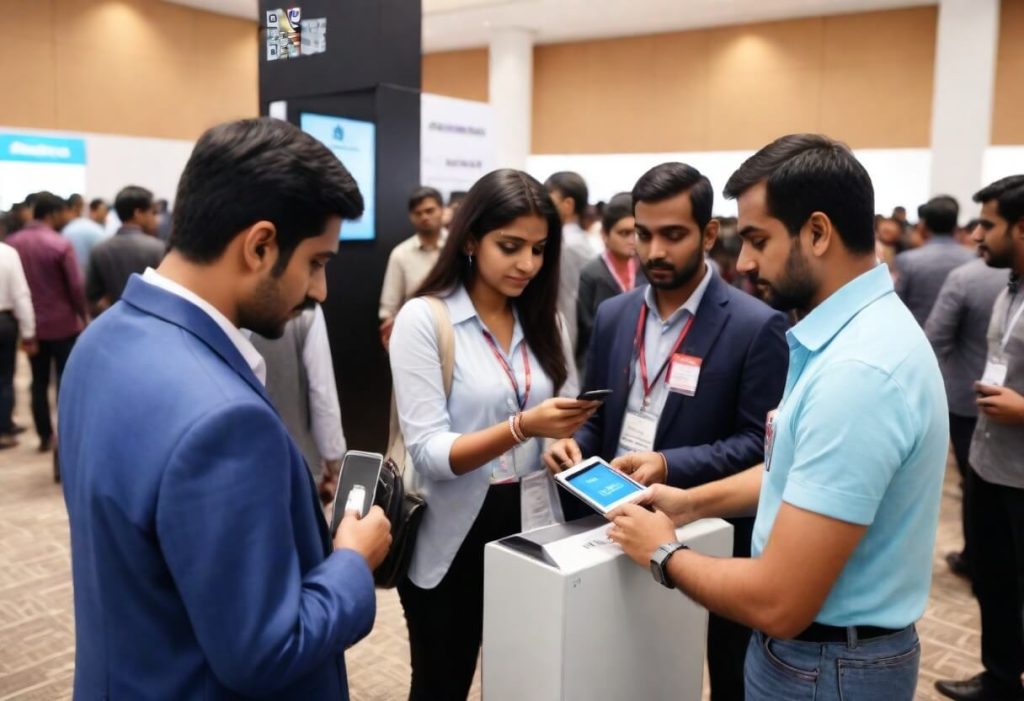
Enhanced Security
Facial recognition boosts event security in simple ways:
- Checking Identities: Only people with approved faces can enter, stopping uninvited guests and security problems.
- Checking Watchlists: It can find and stop people on lists who shouldn’t be there
- Managing VIPs: It makes it easy to spot important guests, so they can get into special areas without special cards.
Customized Attendee Experience
An attendee’s journey may be made more unique with facial recognition. Organizers of events may increase participation by sending personalized greetings and suggestions to returning participants based on their recognition.
Data-Driven Insights
Facial recognition technology can collect useful information about the demographics of attendees and the flow of traffic. This information may be utilized to tailor marketing campaigns, enhance layout designs, and plan for future events.
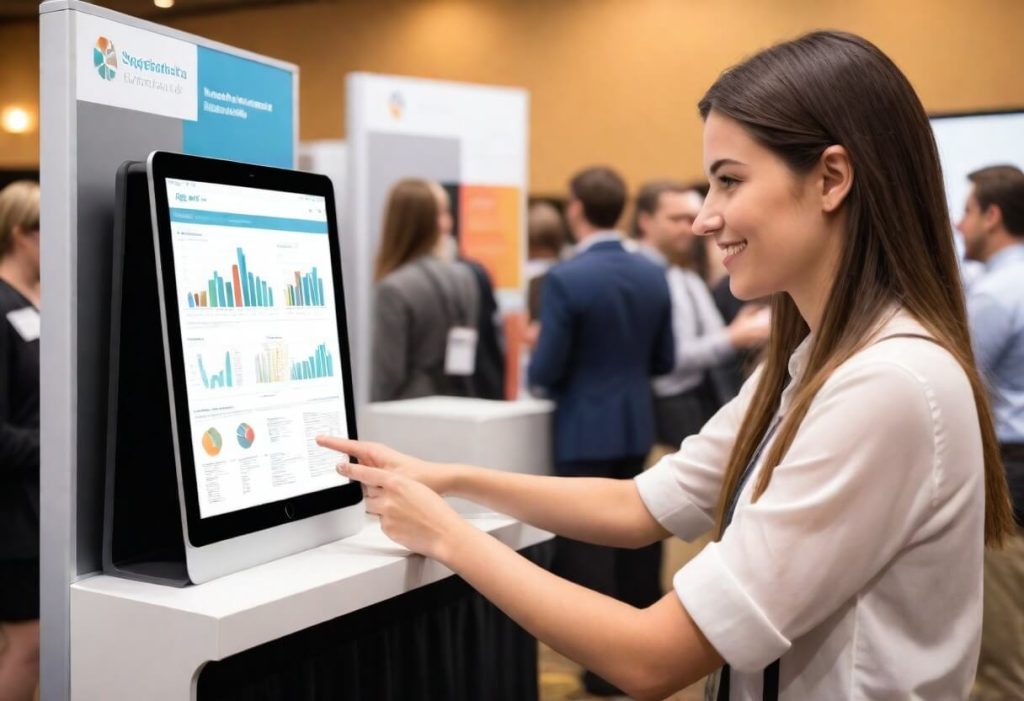
How Does Facial Technology Benefit Attendees?
You must be thinking that facial recognition only works for event organizers but in reality, it offers many benefits for the attendees too:
Convenience and Speed
It eliminates the long waiting queues for attendees and they can seamlessly check-in with just a face scan. In addition to skipping long queues, facial recognition systems are known for streamlined and time-saving experiences.
Reduced Contact
It’s known as one of the paperless event registration methods because it reduces physical touchpoints or any contact at the time of check-in. While it also promotes hygiene and safety.
Personalized Experience
Implementation of facial recognition systems can effortlessly unlock personalized or customized experiences for attendees. Like targeted recommendations for the sessions or booth based on previous events or past preferences.
Facial Recognition System: Challenges And Considerations
While facial recognition offers exciting possibilities, there are challenges and considerations to keep in mind:
- Privacy Concerns: The use of facial recognition systems raises concerns about data collection, storage, and potential misuse of personal information. Event organizers need to ensure transparency and obtain informed consent from attendees regarding data collection practices.
- Accuracy and Bias: Facial recognition technology is imperfect and can be susceptible to errors due to lighting variations, facial expressions, and even makeup. Additionally, concerns exist about potential bias in algorithms, leading to misidentification, particularly for people of color.
- Cost and Implementation: Facial recognition technology requires investment in software and hardware, and its implementation needs to be well-planned and integrated seamlessly into the event ecosystem.
The Future of Facial Recognition in Events
Facial recognition technology has enormous potential for the future of event management, regardless of its difficulties. We may anticipate further acceptance and even more creative uses as the technology develops, accuracy gets better, and privacy issues are resolved. Here are some potential future developments:
- Multi-factor Authentication: Combining facial recognition with other identification methods like QR codes or mobile event apps can enhance security further.
- Real-time Sentiment Analysis: Advanced facial recognition systems might analyze facial expressions to gauge attendee sentiment and satisfaction during the event.
- Immersive Experiences: Facial recognition could be integrated with augmented reality (AR) to create personalized and interactive experiences for attendees.
Conclusion
Facial recognition technology is changing how events are managed and kept safe. It makes things smoother, boosts security, and gives a more personal touch, making events better for everyone involved. But, it’s super important to think about privacy, handle data responsibly, and use the tech fairly and openly. As facial recognition systems improve, events will be even more awesome, safe, and tailored to each person. Also, if you’re looking for event management with face verification technology, Dreamcast can assist you with facial recognition access control. Book your free demo or call us now!





